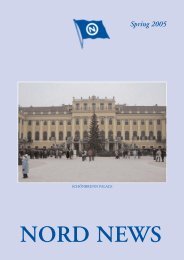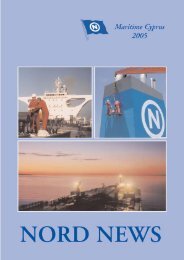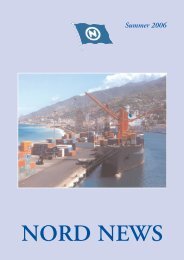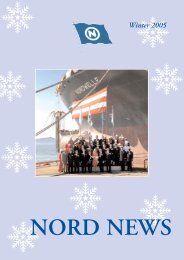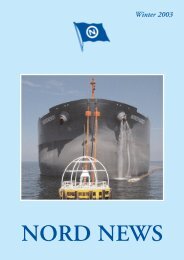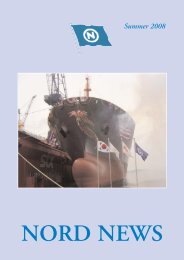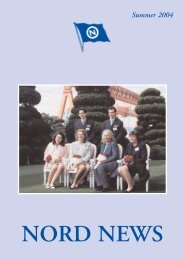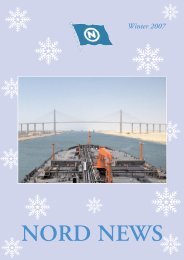SUMMER 2005.qxd
SUMMER 2005.qxd
SUMMER 2005.qxd
Create successful ePaper yourself
Turn your PDF publications into a flip-book with our unique Google optimized e-Paper software.
6<br />
I<br />
n January 2005, my wife and I spent our<br />
annual holiday in Vietnam. We started<br />
with an extensive sightseeing tour at<br />
Hanoi and worked our way down south to<br />
Ho Chi Minh city ending with a 10 day<br />
beach holiday at Panthiet.<br />
The country has a population of about 74 million<br />
people and extends approximately 1700 km<br />
north to south with about 3000 km coastline,<br />
but only 50 km across at its narrowest point. It<br />
borders with Laos and Cambodia in the West, in<br />
the North with China, and the South China Sea<br />
to the East and South. It is a diverse country with<br />
a great variety of country scenery such as<br />
mountains with peaks above 3000 metres, large<br />
colourful rice paddys and picturesque beaches.<br />
The South has a tropical climate like the rest of<br />
Southeast Asia whilst the North has hot summers<br />
from May to October and a moderate winter<br />
season from November to April.<br />
Hanoi - Vietnam's capital lies on the banks of the<br />
Red River some 100 km off the sea with a lovely<br />
landscape of lakes, spacious public parks,<br />
pagodas, museums and historical houses. The city<br />
has about 3.5 million inhabitants. Most<br />
intriguing are the bustling streets jammed with<br />
motorbikes. Large areas of present day Hanoi<br />
were built during the French colonial time. It has<br />
an enchanting “Old Quarter” with old alleys<br />
dedicated to specific guilds.<br />
Haiphong - Going by car from Hanoi to<br />
Haiphong one can sense the fundamental changes<br />
NORD NEWS Summer 2005<br />
A HOLIDAY IN ....<br />
By Claus Bröhan<br />
happening in this country. There are large<br />
industrial developments along the road with even<br />
more under construction but you still pass green<br />
rice fields with water buffalos ploughing the<br />
fields and farmers doing the strenuous work of<br />
transplanting rice plants by hand from one patch<br />
to another one. Haiphong is the 3rd largest city<br />
in Vietnam with bustling port and shipyard<br />
facilities. There are several temples and pagodas to<br />
see and strolling around the town you can still<br />
notice the French colonial architecture.<br />
Halong Bay - Going by car from Haiphong to<br />
Halong Bay at the Gulf of Tonking you pass huge<br />
rice fields and abundant open coal mines. The<br />
name Halong means "where the dragon descends<br />
into the sea" and the distinctive scenery is said to<br />
have been created by the lashing tail of a<br />
rampaging dragon. It is a major tourist attraction<br />
and this part of the South China Sea is speckled<br />
with thousands of beautiful limestone peaks. It is<br />
also considered one of the natural wonders of<br />
Vietnam and is listed as a World heritage site. It<br />
covers an area of approximately 1500 square km<br />
and consists of upto 3000 islands. Taking a boat<br />
tour of the bay is the main activity, enjoying the<br />
spectacular view of the bay and visiting some<br />
caves full of magnificent stalactites and<br />
stalagmites.<br />
Hue - We went back by car from Halong Bay to<br />
Hanoi, where we took a plane to Hue which was<br />
Vietnam's capital under the emperors of the<br />
Nguyen dynasty from 1802 until 1945. On the<br />
northern banks of the Perfume River you find a




